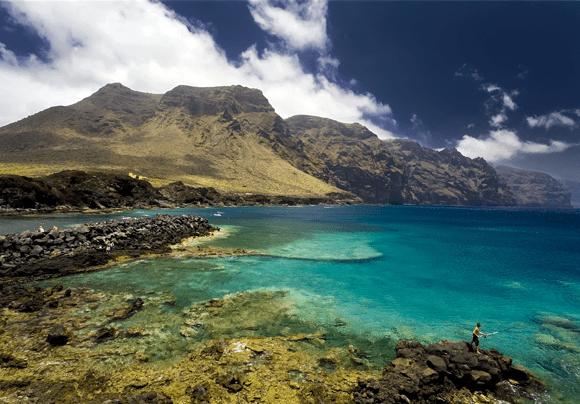Dragon’s Tears is an elegant series of movements that reveal to the warrior the transcendent essence of our true nature.
It is a timeless form that flows like water, generating powerful and soothing chi, which courses in and around the body. This unique form is the old Nagual Lujan/master Lo Ban’s gift to those who seek their freedom within the integrity of their heart-path.
Dragon’s Tears helps one forget themselves – the socially embedded being – so that one can remember the most precious gift we have; the intangible self that witnesses its own journey at the moment that escapes our ability to possess it.
The introduction of these exercises immediately transforms awareness through a physicality that awakens dormant aspects of perception. From the outset, one is brought into a state of heightened consciousness that comes about through the stimulation of both physical and energetic channels in the body and the absorption of one’s attention in this practice.
Dragon’s Tears will dramatically impact your life, clearing stagnant energy and strengthening the body as well as enhancing perception, health and longevity.
Dragon’s Tears Workshop
August 2nd-8th, 2015
Tenerife, Canary Islands

About Tenerife, Canary Islands
Tenerife is the largest of the seven Canary Islands; it sits in the Atlantic Ocean just off the coast of North Africa.
Tenerife is often called a paradise island and not without reason. The island experiences sunshine all year round and has an abundance of world class attractions set against the stunning background of Mount Teide, the highest elevation in Spain and World Heritage Site, being the third largest volcano in the world from its base.
The lunar landscape of Mount Teide National Park is fascinating, reminiscent of the beginning of time and a must see experience
Tenerife is probably one of the last European paradise isles. It offers lush forests, exotic fauna and flora, deserts, mountains, volcanoes, caves, incredibly beautiful coastlines, and spectacular volcanic and rocky beaches.
Weather
In general, the weather in the Island is very soft, warm and moderated during all seasons of the year. There are not periods of intense cold or very high temperatures. The average temperature is around 18°C/62°F in winter and it reaches around 25°C/81°F degrees in summer. There can be a high variation of temperature according to the height, microclimate or location in the island. If you are planning to spend time hiking or in the higher mountainous regions, it is advisable to bring both winter and summer clothes, independent of the time of year.

Transport
Tenerife is serviced by two major airports: Tenerife North Airport (Los Rodeos) and Tenerife South Airport (Reina Sofia). The two airports do not only provide connections with the mainland Europebut they also make available, by means of the airline companies servicing them, flights between Tenerife and other Canary Islands, which renders island hopping pretty tempting. In addition, Tenerife has fine air connections with non-European destination, such as Miami, Dakar and Caracas. Obviously, Tenerife is a top destination at a global scale.
More than 60 airline companies operate at these two airports. International flights are covered by Air One, Austrian Airlines, Ryanair, Thomas Cook Airlines, just to count a few, whereas inter-island flights are ensured by Binter and Islas Airway. In addition, both low-cost and major airline companies offer their services to a somewhat miscellaneous flow of visitors, providing them with the opportunity of exploring Tenerife regardless of budget.
Food
The cuisine of the Canary Islands combines traditional Spanish recipes with African and Latin American influences.
Some Canarian dishes come from Spanish cooking, but the Canarian specialities have their own touch of originality. There is a genuine local cuisine in Tenerife. A typical Canarian restaurant is usually distinguished by a short menu of soups, stews and grilled fish dishes.
The basis of Canarian cuisine is a variety of fresh vegetables, fruit and fish, generally light meals, more easy to digest in a warm climate. With Tenerife being such a cosmopolitan place you can find varied international cuisine options to fit all tastes, budgets and experiences.

Activities
The island offers many activities such as hiking, biking, paragliding, whale and dolphin watching, deep diving, scuba diving, snorkelling, horse riding, camel rides, golf, surfing, wind surfing, star gazing and much more. There are also various theme parks, old colonial towns, traditional and international restaurants, vineyards that are over 500 years’ old, fascinating archaeology and a natural beauty that is breathtaking.
As one of the top three whale and dolphin watching destinations in the world, Tenerife is the best place in Europe to see a magnificent nature at its best. With resident species all year round including bottlenose dolphins, pilot whales and sperm whales and up to 24 other species migrating through Canarian waters at different times of the year, it is a veritable natural paradise.
A good way of knowing the island is walking; There are dozens of well marked footpaths and trails as well as little known tracks and routes up remote mountain passes to challenge even the most experienced hiker. And even though Tenerife is inherently mountainous, there are spectacular walks which involve just short ascents of a couple of hundred meters as well as longer more challenging climbs up some of the higher peaks which rise to over 3,700 metres (12,000 feet).

Landscape and Terrain
Tenerife is a volcanic island that was originally formed in the late Tertiary Age. Seven million years ago, the areas of Teno, Anaga and Adeje emerged from the sea and later joined together to form the Dorsal Mountain Range. In the centre of the island, the impressive cone of Teide (3,718 m) rises up over the Caldera de Las Cañadas, forming the highest point of the island and, indeed, of the whole of Spain.
The rugged island terrain and the variety of climates has produced a territory of many different landscapes and forms, from the Teide National Park to Los Gigantes Cliffs with their vertical walls, with semi-desert areas with their drought- resistant plants in the south, valleys of tropical and sub-tropical crops, areas of laurel forests in the Anaga and Teno massifs and large areas of pine forest above the laurel forests relicts of the Tertiary Age. The wide variety of climates and landscapes in Tenerife is matched by a wealth of ecosystems, each with its own characteristic flora and fauna.

Visas
You won’t need a visa if you’re staying for less than three months on a six-months interval and you have nationality from one of the following countries: Andorra, Argentina, Australia, Austria, Brazil, Brunei, Bulgaria, Canada, Chile, Chipre, Costa Rica, Croatia, El Salvador, Slovakia, Slovenia, United States, Estonia, Guatemala, Honduras, Hungary, Iceland, Israel, Japan, Lithonia, Liechtenstein, Lithuania, Malaysia, Malta, Mexico, Monaco, Nicaragua, Norway, New Zealand, Panama, Paraguay, Poland, Czech Republic, Korea, Romania, San Marino, Santa Sede, Singapur, Switzerland, Uruguay, Venezuela, Hong Kong, Macao and any country that belongs to the European Union.

Hi Carolyn,
The sessions will take place between 10am-12pm and 3-5pm daily.
If you wish to do sightseeing it may be a good idea to allow for a couple of extra days either before or after the workshop.
Thanks. Can you give the name of the workshop location? I’d like to check it out before making a decision about attending.
Will there be time during the days of the workshop for sightseeing on the island?
Hi Deorgins,
The cost is for the tuition fees for workshop only. Students are responsible for their own accommodation and travel fees.
1. What does the workshop cost include?
2. Is round trip travel and food part of workshop cost?
Thanks